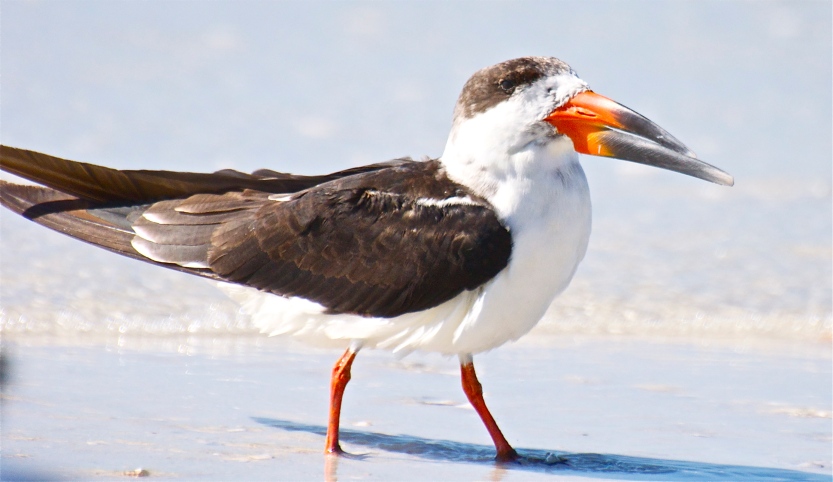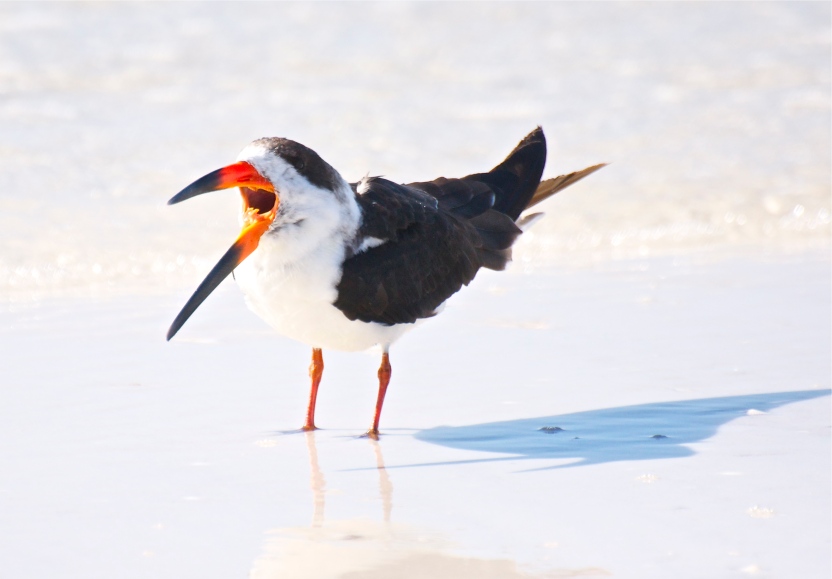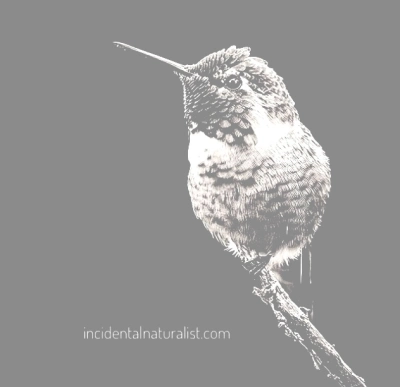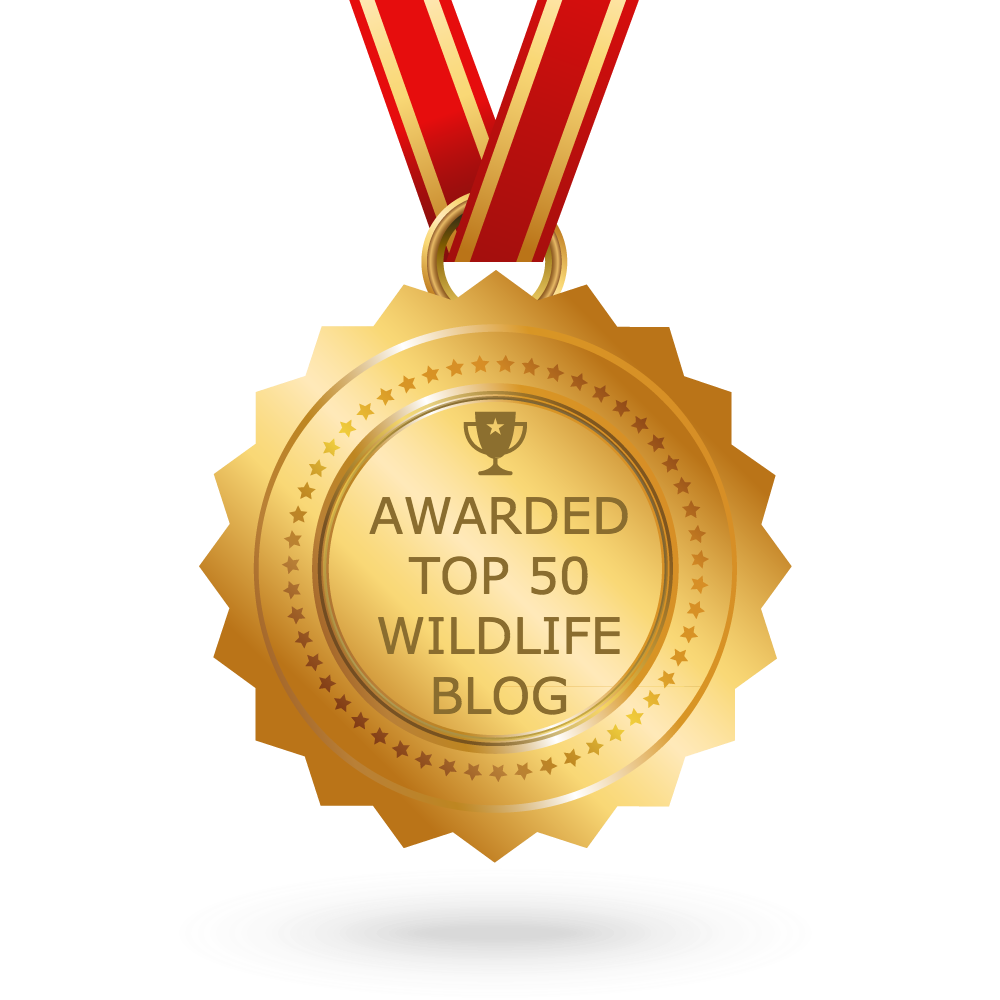Before arriving at my new home city, New York, I had already undertaken some research into the local wildlife that I could hope to see in New York and the surrounding area. I began to make a mental list of species that I wanted to see and places to see them. One coastal bird that caught my eye as a must-see species due to its bizarre appearance was the Black skimmer.
I knew that these birds could be seen at their breeding colony on the long beaches of Sandy Hook, New Jersey and along the New Jersey coastline. I had identified a number of species in these areas that I wanted to see but the skimmer was the number one target. Over the course of my first year in the America I made a few trips to these areas and ticked-off many new species for me, but the elusive Black-skimmer evaded my binoculars or camera. This bird looks strange due to its unusual beak but looks majestic in the air. This has led to it being the target of many other bird photographers, bloggers and Tweeters. Every time a sensational image appeared on social media or in my WordPress Reader such as these from BellaRemyPhotography.com it served as a reminder of the bird that was holding itself back from me.
It wasn’t until a family holiday to Clearwater in Florida in November that the bird finally revealed itself in all its glory to me. A 20 minute drive north takes me to 9th Bar Espresso in Dunedin; a much needed oasis where I can get a really very good coffee to lubricate the drive. I head north for another 15 minutes towards Honeymoon Island and I am soon on causeway roads with bay water on both sides. It was along the shoreline of this causeway where I finally spotted my first skimmers. Three birds sleeping amongst a group of Laughing gulls.
I was delighted to have finally seen the Black skimmer even if two of them did have their head under their wing and the third was clearly not planning on moving any time soon. I took my photographs of these distant birds, backlit by a low winter sun.
The following day was another chance to drive north, this time to another causeway at Howard Park. I got out of the car to photograph some wading birds. When I finished taking some snaps I turned to walk back to the car, looking up just in time to see a majestic sight; a small flock of Black skimmers cutting the air effortlessly, low over the water, with red beak flashing in the sun like a red strobe bicycle light.

The next day arrives. The sun is out and it is going to be hot. It is one of those days when the beach is the only place to go and the morning is the time to be there. We head to Honeymoon Island beach where the water is shallow and warm. A flock of birds sit on a sandy spit and dolphins are hunting close to the beach. I note that the birds are mainly Royal turns and Sandwich turns with a few Laughing gulls. I take the camera over because I really like Royal turns. I notice that there is an odd one out in the group.

There are three species of skimmer of which the Black is the only one found in North America and is the largest at 40–50 cm (16–20 in) long with a 107–127 cm (42–50 in) wingspan. The other 2 species of skimmer, the African and the Indian skimmers, are very similar in appearance to the Black. Its most striking characteristic is large, thin, red and black bill with the lower mandible that is longer than the upper. It is the only bird in America with this characteristic. When feeding, the skimmer drags the lower bill through the surface of the water as it flies, catching small fish by sense of touch. The New York ornithologist R. C. Murphy said in 1936 – they look “unworldly… aerial beagles hot on the scent of aerial rabbits.”


Nationally the Black Skimmer has a conservation status of Least Concern although some states have elevated this status. It is clear that the species is in decline due to its preferred nest sites being on soft white coral sand beaches that form the preferred recreational site for that nemesis of all wildlife, the human being. Following the disastrous BP oil spill from Deep Water Horizon in the Gulf of Mexico, almost 300 dead or affected birds were collected.

My eye had originally been caught by the beak and the unusual feeding method that the beak is used for. This is why I wanted to see this bird. Having seen them, it is the vivid red of the beak and most of all, the grace with which the skimmer glides through the air that leaves a lasting impression. It is a magnificent sight.
If you enjoyed this post, please follow Incidental Naturalist.
Comments and shares are welcomed.
Categories: USA






Atypical bird I have never seen it yet 🙂
LikeLiked by 1 person
I’d love to see one of these birds in the wild. I’ve watched them feeding on several nature programs, and I’m captivated by how skillful they are.
LikeLiked by 1 person
Fantastic photos of an unusual looking species. Sometimes I feel that seabirds are overlooked for the flashier parrots, birds of prey etc, but personally I find them fascinatingly unique and varied. Great photos and great blog!
LikeLiked by 1 person
Thanks for the really kind comment! I agree that there are some wonderful sea birds that get overlooked, probably because they spend a lot of time off shore.
LikeLike
I love that photo of the skimmer amongst the terns, great composition! It’s very rewarding to finally see a bird you’ve been hunting down for a while.
LikeLiked by 1 person
Thank you Tara! Very kind of you. I got a bit lucky to find that many terns sitting so close together and even more lucky to find a skimmer waiting for its photo to be taken! 🙂 yes it is always rewarding to get something you have waited for.
LikeLiked by 1 person
Fascinatiang post, David, and that spectacular shot of the “majestic glider” is one in a thousand!
LikeLiked by 1 person
Thanks for your kind words! 🙂
LikeLike
Wonderful David!! Thanks for sharing!
LikeLiked by 1 person
A very cool bird. I like how they hang out with other birds – that makes for great photos. I enjoy your blog, so much so that I nominated it for the Infinity Dreams Award. To find out more, check out my latest post at https://writerdiljak.wordpress.com/
LikeLiked by 1 person
They certainly do have an eye catching beak, David! This was a new species for me. Thank you again for another gallery of beautiful photographs and interesting information.
LikeLiked by 1 person
Thanks again, Jane for another encouraging comment 🙂
LikeLiked by 1 person
That’s some beak! Nice shots. The ‘one of these is not like the other’ is awesome.
LikeLiked by 1 person
Thanks for the kind words!
LikeLike
Fabulous post
LikeLiked by 1 person